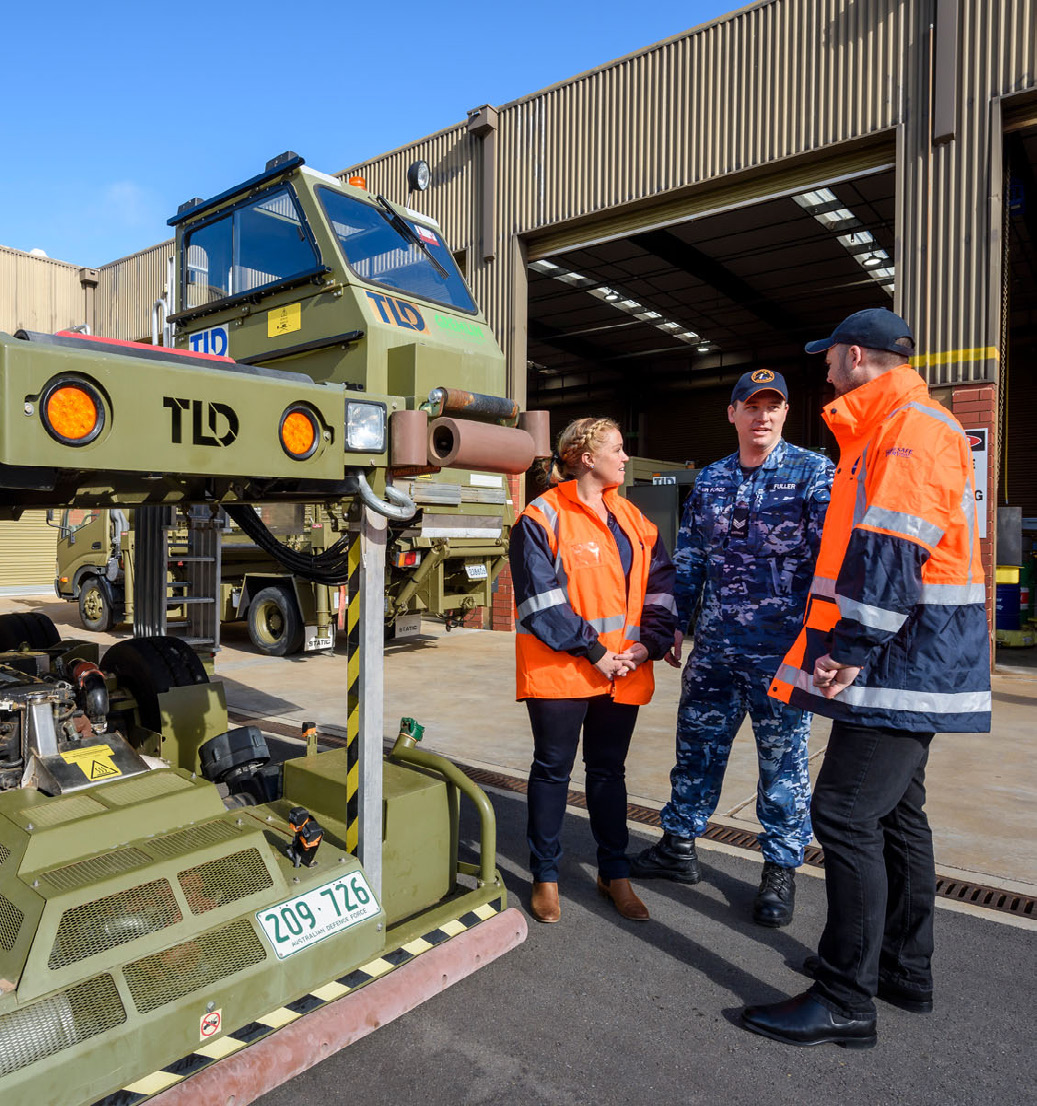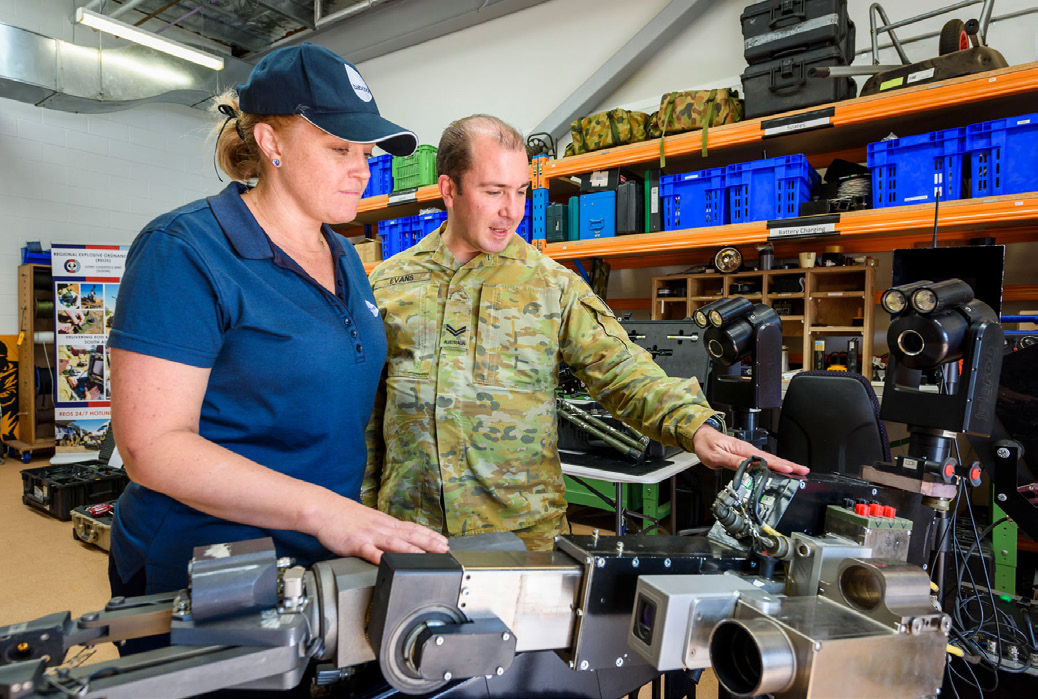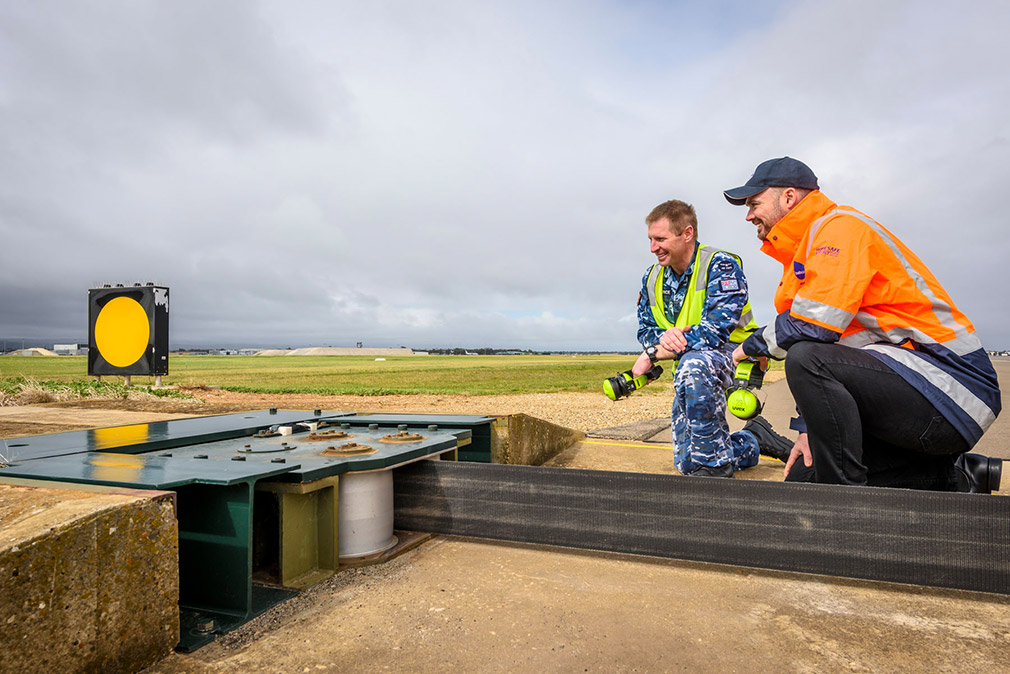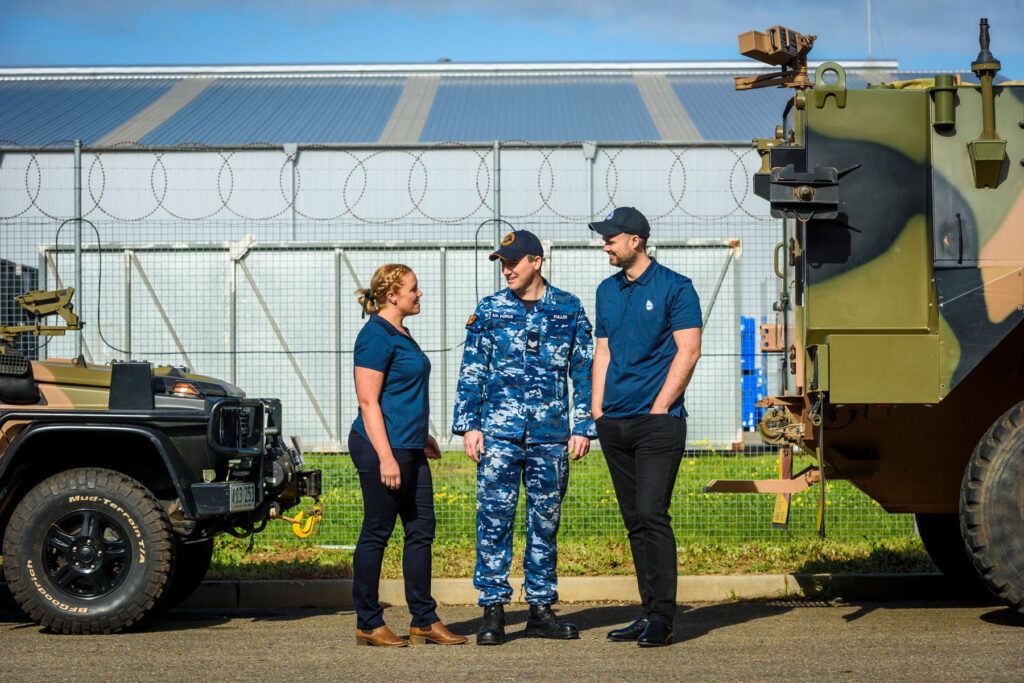Asset management
Management of assets for defence, aviation and critical services sectors.
The ADF Ground Support Equipment (GSE) contract represents a fleet of approximately 11,000 critical assets across 250 asset types, which support Air Force, Army and Navy fixed-wing and rotary aircraft. The Commonwealth sought an experienced partner who could bring a modern commercial Asset Management system to transform the management of the Aviation GSE, increase asset availability and reduce Total Cost of Ownership.
As a trusted Defence partner, Babcock has been delegated full responsibility for the GSE program management, including:

Based at over 20 operating bases in Australia and internationally, the GSE fleet of 11,000+ assets across more than 250+ types Aviation GSE is a critical enabler for all Air Force, Army and Navy fixed-wing and rotary-wing aircraft. Prior to 2018, Babcock Australia’s engineering capability largely relied on expertise from the UK team. There was also a lack of mutual understanding of needs, planning and communication between Defence and existing contractors which was leading to distrust of defence industry. Our understanding of Army’s operational rhythm, and how GSE supported the wide variety of Force Element Groups, also required improvement.
In 2017, Defence partnered with Babcock for the strategic asset management of the common GSE fleet.
This commenced with a 6-month transition program. We approached the transition with an understanding that we had to transform both the asset management practices as well as our approach to partnership with Defence.
Within the six months, Babcock successfully attained ISO 55001 Asset Management accreditation, conducted in-depth hand overs with CASG fleet managers and developed a new fleet intelligence tool, while continuing to sustain the fleet. We were able to achieve due to three key collaborative strategies:
GSE supports a wide variety of Force Elements Groups. To gain insight, Babcock established relationships with operating and maintenance units, supplier groups and industry service partners to know their needs, frustrations and operating cycles. We had to put in place long-term planning, adjust to the Defence annual budgetary and expenditure cycle, and communicate Defence’s needs to external suppliers and maintenance providers. This enabled us to accurately represent and adjust to Defence’s interests. We were also able to leverage the understanding of Babcock staff with Defence service experience. We consulted with ex-service members within Babcock, which enabled us to:
Effective commercial execution could only be achieved through organisational compatibility. Team configuration played a large role in this. Babcock understood the daily interface/working teams needed to be both technically proficient, as well as collaborative and attuned to each other. To achieve this synergy, Babcock:
Babcock recognised the full outsourcing of AvSSPO was a risk to CASG and to Defence aviation operations. Mindful of this privilege, Babcock, over the past five years, has championed the following techniques which have and continue to create a strong culture of trust:
Babcock’s approach to partnership enabled a genuine asset management stewardship to emerge, wherein Babcock was trusted to:

Babcock manages the GSE fleet of 10,000+ assets across more than 253 common (multi-platform users) types GSE for all Air Force, Army and Navy fixed-wing and rotary-wing aircraft. Relevant to the SMS LDP contract, our management of GSE entails:

To maximise availability, and embed transparency and improvement into the fleet management operations, Babcock developed a Digital Fleet Intelligence Capability (DFIC). This system integrates, analyses and reports on fleet data from a number of sources to improve evidence based. Hosted on Babcock’s secure network and accessible by Defence staff it provides a single point of truth and is accessible to all who require the information. The DFIC enables our team to have a comprehensive and up-to-date picture of the fleet, including:
The DFIC is hosted on Babcock’s secure network and accessible by Defence staff. It enables Babcock and Defence to have an accurate and up-to-date profile of the diverse GSE fleet on a macro and micro level. The success of this system is seen in Babcock’s performance across:
